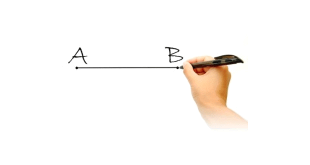 You get into an elevator (or a lift, as we sometimes call it) and for a second or two, just as the elevator moves down, we feel weightless. On the other hand, if we go up in an elevator, we suddenly feel heavier just as the elevator lurches upwards.
You get into an elevator (or a lift, as we sometimes call it) and for a second or two, just as the elevator moves down, we feel weightless. On the other hand, if we go up in an elevator, we suddenly feel heavier just as the elevator lurches upwards.
To understand this feeling of weightlessness, we need to understand a few basic things first.
Mass: The amount of matter that constitues us results in our mass. Mass is the property which “resists” a change in acceleration (linear or angular). It is this “resistance” that results in inertia.
Weight (or Actual Weight): When gravity acts on matter (our body), you have a weight (actual weight). But this, theoretically, means that actual weight can only be computed when you consider all the gravities from all the different bodies in the universe acting on the mass. The sum of all these gravities is equivalent to the net gravitational force or the gravitational field (which is not necessarily the same as ‘g’ of the ‘free fall acceleration’). Actual weight only depends on the net gravity and the mass it is acting on.
Apparent Weight: As opposed to actual weight, apparent weight is what your weighing machine shows you. When you are standing on a platform, and that platform is neither going up nor down with respect to the earth (whose gravitational field basically dominates every other graviational field), the platform pushes up against your feet in the opposite direction of the earth’s gravity. This “pushing you up” by the platform is what enables you to stand “on” the platform. Your actual weight is — always — gravity acting on your mass. But your apparent weight is the “opposite, pushing-up force’ applied by the platform. Therefore if you are standing on a weighing scale, this opposite force is what the weighing machine can measure.
Weightlessness: This is actual weightlessness, and corresponds to actual weight — and this occurs when no gravity acts on your body’s mass, which is an impossible situation in the universe.
Apparent Weightlessness: As opposed to actual weightlessness, apparent weightlessness occurs when your apparent weight zeros out. Now, if you remember, apparent weight was the opposite, pushing-up force applied by the platform or the weighing machine on which you were standing.
However this opposite force is not always equal to the actual weight. When does such a strange thing happen? Here are two examples. Suppose you are floating in a tub full of water, and try to stand on a weighing machine on the floor of the tub. Though your actual weight remains unchanged, since the buoyancy of the water in the tub exerts an upward force on your body, you can no longer “press” down with as much force as earlier on the weighing machine. This is why the weighing machine will register a lighter apparent weight.
In the second example, consider that the platform, on which sits the weighing machine, on which you are standing, begins to fall down at terminal velocity, so that you, the scale and the platform are all falling at the same velocity towards the earth. (For a definition of “terminal velocity”, please go to the end of this article). Now you can no more practically “press” down on the weighing machine, therefore it will register nothing. Your apparent weight has zeroed out and you are in apparent weightlessness. This is what happens to astronauts too in a spaceship orbiting the earth. However you still have actual weight.
Conversely had the platform suddenly started climbing upward away from the earth, then you would “press” down harder on the weighing scale for a moment before all the velocities equalized, and the weighing scale would register a higher apparent weight. It’s not as if you really gained a couple of pounds by stepping into the elevator!!
So the key concepts to grab are the definitions of weight or actual weight, and the meaning of apparent weight. An experiment on an elevator with a bathroom weighing scale can drive the point home.
An object’s apparent weight is equal to its actual weight, except if:
• The object has an acceleration, as in a lift, a rocket or a roller coaster.
• Some force other than the earth’s gravity and the normal force is acting on the object. This may be buoyancy, magnetic force, or the gravitational force of another body.
Terminal Velocity: The velocity when a falling object is no longer accelerating; the force due to gravity is equal to the opposing force of air resistance.. When an object continues to fall steadily until air resistance becomes so great that it equals with the pull of gravity and the object can fall no faster.
 Kids Portal For Parents India Kids Network
Kids Portal For Parents India Kids Network






